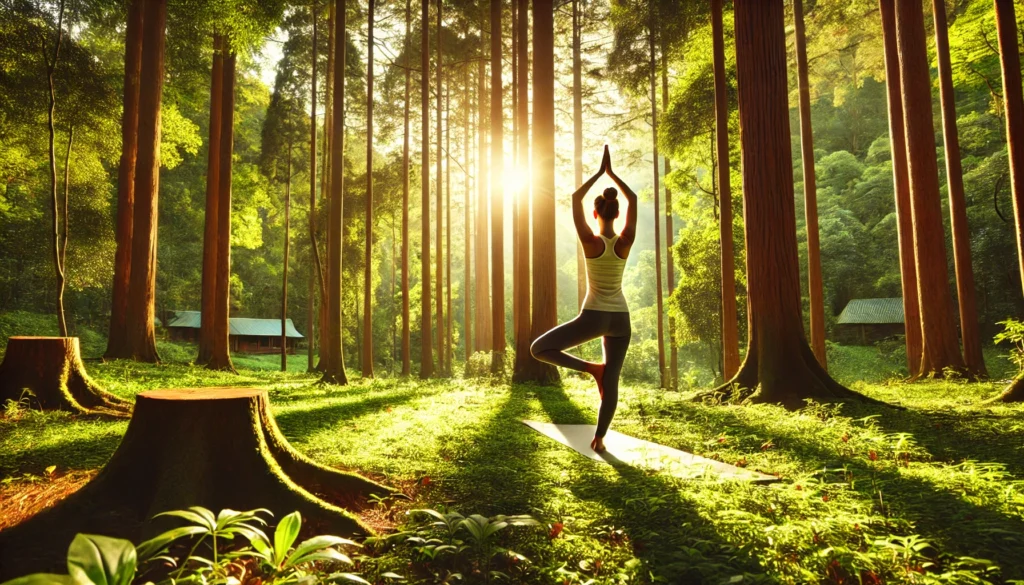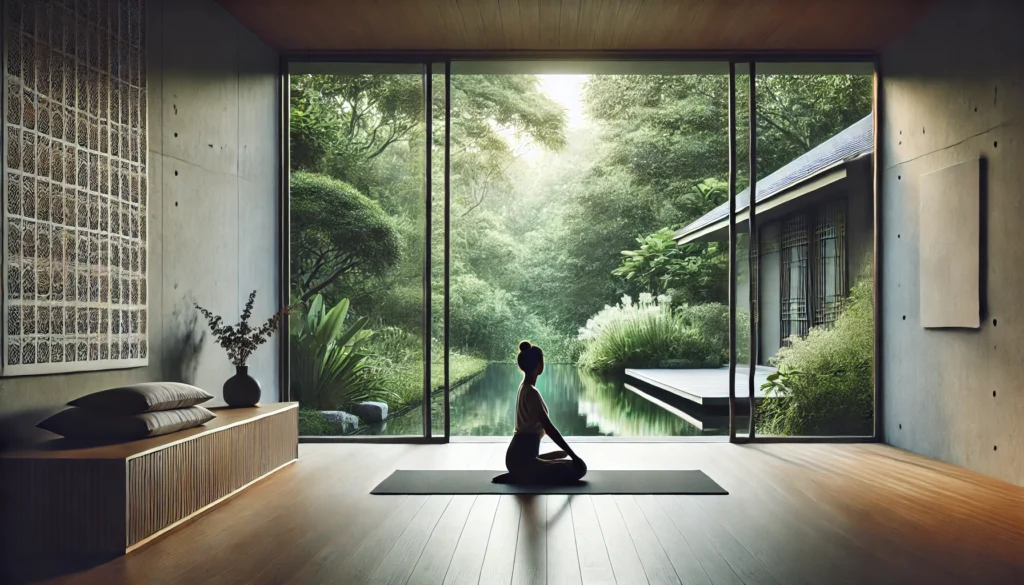Understanding the Role of Yoga in Stress Relief
Stress has become a pervasive aspect of modern life, affecting individuals on both psychological and physiological levels. The human body is designed to handle short-term stress, but chronic stress can lead to a range of health concerns, including anxiety, insomnia, digestive issues, and cardiovascular problems. Yoga, an ancient practice that combines movement, breathwork, and mindfulness, has been widely recognized for its ability to mitigate stress and restore balance to both the mind and body. Research has shown that yoga for stress relief can regulate the nervous system, reduce cortisol levels, and enhance emotional resilience. The mind-body connection fostered through yoga enables individuals to develop greater self-awareness, equipping them with tools to manage stress more effectively in daily life.
The therapeutic effects of yoga stem from its ability to activate the parasympathetic nervous system, often referred to as the “rest and digest” system. This activation counteracts the effects of the sympathetic nervous system, which governs the body’s fight-or-flight response. By practicing yoga for stress management regularly, individuals can cultivate a state of relaxation that extends beyond the time spent on the mat. Certain yoga poses for anxiety specifically target areas of tension in the body, helping to release stored stress and encourage a sense of ease. In addition to physical benefits, yoga’s emphasis on mindful breathing fosters a calming effect on the mind, making it an effective approach for managing anxiety and emotional distress.
You May Also Like: Mom Burnout Symptoms: How to Recognize, Prevent, and Recover from Exhaustion in Motherhood
The Science Behind Yoga for Anxiety and Stress
The effectiveness of yoga for anxiety and stress relief is supported by a growing body of scientific research. Studies indicate that yoga practices can significantly reduce symptoms of anxiety disorders, including generalized anxiety disorder (GAD) and panic disorder. One of the mechanisms through which yoga reduces stress is by modulating the hypothalamic-pituitary-adrenal (HPA) axis, which plays a central role in the body’s response to stress. Yoga has been found to lower cortisol levels, the primary stress hormone, while simultaneously increasing the production of gamma-aminobutyric acid (GABA), a neurotransmitter associated with relaxation and reduced anxiety.
Additionally, yoga asanas for anxiety encourage the release of endorphins, which enhance mood and overall well-being. Breathing exercises incorporated into yoga, such as diaphragmatic breathing and alternate nostril breathing, further support stress reduction by promoting deeper oxygenation and activating the body’s relaxation response. Individuals who consistently practice yoga for stress relief often experience improved sleep, better emotional regulation, and an increased ability to cope with stressors in a balanced manner. The integration of movement and mindfulness makes yoga a holistic solution for those seeking to manage stress and anxiety effectively.

Best Yoga Poses to Relieve Stress and Anxiety
Certain yoga poses for stress and anxiety are particularly effective in alleviating tension and promoting relaxation. These poses target areas of the body that commonly store stress, such as the shoulders, hips, and spine. Additionally, they encourage a slow, mindful approach to movement, which helps ground the mind and bring awareness to the present moment.
Child’s Pose (Balasana)
Child’s Pose is a gentle resting posture that encourages deep relaxation and surrender. By folding forward and resting the forehead on the mat, individuals activate the parasympathetic nervous system, fostering a sense of calm. The pose gently stretches the lower back, hips, and thighs while allowing the breath to deepen naturally. Practicing Child’s Pose regularly can help release physical tension and provide emotional comfort during times of stress.
Standing Forward Bend (Uttanasana)
This pose is known for its ability to calm the mind while stretching the hamstrings and lower back. The act of folding forward encourages introspection and relieves pressure on the neck and shoulders. As the head hangs below the heart, blood flow to the brain increases, promoting mental clarity and reducing symptoms of anxiety. Holding the pose for several deep breaths allows for the release of physical and emotional tension.
Legs-Up-the-Wall Pose (Viparita Karani)
One of the most restorative yoga poses for anxiety disorder, Legs-Up-the-Wall Pose helps reverse the effects of prolonged stress and fatigue. By elevating the legs, circulation improves, and the nervous system receives a gentle signal to shift into relaxation mode. This pose is particularly beneficial for individuals who experience insomnia, as it calms the mind and prepares the body for restful sleep. Practicing this pose for 5–10 minutes can yield noticeable stress-relieving benefits.

How Does Yoga Help with Stress and Anxiety?
The question “How does yoga relieve stress?” can be answered through multiple physiological and psychological mechanisms. Yoga’s emphasis on mindful movement and breath regulation helps individuals cultivate greater awareness of their body’s stress signals, allowing for a more intentional response to stressors. Unlike high-intensity exercise, which can sometimes exacerbate stress, yoga provides a gentle, low-impact approach to movement that soothes the nervous system rather than overstimulating it.
Breathwork, or pranayama, is a fundamental component of yoga that plays a crucial role in stress relief. Techniques such as Nadi Shodhana (alternate nostril breathing) and Ujjayi (oceanic breath) have been shown to lower blood pressure, slow the heart rate, and improve vagal tone—an indicator of resilience to stress. By incorporating breath awareness into daily life, individuals can develop a greater sense of control over their emotional responses, reducing the impact of stress and anxiety.
Incorporating Yoga into a Stress-Relief Routine
For individuals looking to establish a consistent yoga practice, incorporating stress-relieving yoga exercises into daily life can yield profound benefits. Practicing even a few minutes of yoga each day can create a cumulative effect, gradually rewiring the nervous system to respond to stress more effectively. Morning yoga routines can set a positive tone for the day, while evening practices can help transition the body into a state of relaxation before bedtime.
Beyond the physical aspect of yoga, integrating mindfulness and meditation enhances the practice’s stress-reducing potential. Mindfulness meditation, when combined with yoga, fosters a non-judgmental awareness of thoughts and emotions, helping individuals detach from anxious patterns of thinking. This integration of movement and meditation makes yoga for stress management a comprehensive approach to mental and physical well-being.

Frequently Asked Questions (FAQ) on Yoga for Stress Relief and Anxiety
1. How does yoga relieve stress differently than other forms of exercise?
Yoga for stress relief differs from other forms of exercise by focusing on the nervous system rather than simply exerting physical effort. While high-intensity workouts can temporarily reduce stress by releasing endorphins, they also elevate cortisol levels, which can contribute to long-term tension. Yoga, on the other hand, activates the parasympathetic nervous system, promoting relaxation and restoring hormonal balance. By combining breathwork, mindful movement, and meditation, yoga that relieves stress helps reduce mental overload while easing physical tension. Unlike other exercises, yoga for stress reduction fosters long-term resilience by rewiring the body’s response to stressors.
2. Can yoga help with anxiety in the long run, or is it only a short-term fix?
Yoga for anxiety is not just a temporary solution but a long-term tool for emotional and mental stability. Regular practice strengthens the brain’s ability to regulate fear responses, which is particularly beneficial for those suffering from chronic anxiety or panic attacks. Yoga poses for anxiety disorder encourage neuroplasticity, meaning that consistent practice helps the brain form new, healthier pathways for handling stress. Additionally, yoga for anxiety and stress improves heart rate variability (HRV), a key marker of stress resilience, allowing individuals to recover from anxious states more quickly. By integrating yoga exercises for anxiety into a daily routine, individuals can create sustainable improvements in emotional well-being.
3. Which type of yoga is best for stress and anxiety relief?
For those wondering which type of yoga is best for stress and anxiety, slower, more mindful styles tend to be the most effective. Restorative yoga and Yin yoga focus on long-held poses that activate the parasympathetic nervous system, promoting deep relaxation. Hatha yoga, which emphasizes slow movements and deep breathing, is also beneficial for stress relief. Vinyasa yoga, when practiced at a gentle pace, helps release pent-up energy that can contribute to anxiety. The best yoga poses for anxiety are typically those that encourage grounding, such as forward bends and hip openers, which help regulate the nervous system and reduce stress levels.
4. How does yoga help with stress management in high-pressure work environments?
Yoga for stress management is particularly useful in high-pressure work environments, as it trains the body and mind to remain calm under stress. Workplace stress often triggers the fight-or-flight response, leading to mental fatigue and poor decision-making. Stress-relieving yoga exercises, including breathing techniques and seated stretches, can be incorporated into a busy workday to improve focus and emotional control. Yoga to reduce stress also encourages better posture, reducing physical strain caused by prolonged sitting or computer work. Many companies now offer workplace wellness programs that integrate yoga for stress reduction, recognizing its effectiveness in improving employee productivity and well-being.
5. Can yoga help with anxiety when combined with other mental health treatments?
Yes, yoga for anxiety disorder works well alongside traditional mental health treatments such as therapy and medication. Cognitive-behavioral therapy (CBT) and yoga for anxiety share common principles, such as awareness of thought patterns and learning to regulate physical responses to stress. Studies have shown that yoga poses for anxiety disorder can enhance the effectiveness of psychotherapy by providing an additional tool for emotional regulation. Additionally, yoga for panic attacks helps individuals regain control over their breathing, which can be beneficial during acute anxiety episodes. Integrating yoga into a broader treatment plan can accelerate progress and improve overall mental health outcomes.
6. What are some good yoga poses for anxiety that can be done in a short amount of time?
For those short on time, good yoga poses for anxiety include simple yet effective positions that quickly calm the nervous system. Legs-Up-the-Wall Pose is a favorite among yoga poses for anxiety and depression, as it helps reverse the effects of stress and fatigue. Seated Forward Bend encourages introspection and relaxation while gently stretching the spine. Child’s Pose is another excellent option, as it mimics a fetal position, which provides a natural sense of security. Anxious poses that involve deep breathing, such as Reclining Bound Angle Pose, help slow heart rate and reduce cortisol levels. Even practicing these yoga positions for anxiety for five minutes can yield noticeable relief.
7. Can yoga for panic attacks be effective during moments of acute stress?
Yes, yoga for panic attacks can be highly effective when applied correctly. Certain yoga poses for stress and anxiety, such as Standing Forward Bend, help redirect nervous energy and encourage the body to shift from a hyperactive state to a more relaxed one. Breathing exercises like Nadi Shodhana (alternate nostril breathing) are especially useful in calming the mind during a panic attack. Stress-relieving yoga exercises that focus on grounding, such as Mountain Pose, can provide stability and help counteract dizziness or disorientation. The key is to practice these techniques regularly so that they become second nature in moments of acute stress.
8. How does yoga compare to meditation for stress and anxiety relief?
Yoga for anxiety and stress provides benefits that complement meditation but also offers unique advantages. While meditation focuses primarily on stillness and awareness, yoga integrates physical movement, which can be more effective for individuals who struggle with sitting still. Yoga exercises for anxiety combine breath control, movement, and mindfulness, making it easier for some people to transition into a meditative state. Additionally, anxious poses in yoga specifically target areas of tension, helping to release stored stress that traditional meditation may not address. For those wondering if yoga can relieve stress better than meditation, the answer depends on personal preference—both practices offer significant benefits when used consistently.
9. How does yoga reduce stress on a physiological level?
The question of how yoga reduces stress can be answered by looking at its direct effects on the body’s nervous and endocrine systems. Yoga asanas for anxiety stimulate the vagus nerve, which improves vagal tone and enhances the body’s ability to shift out of fight-or-flight mode. Regular practice of yoga for stress relief also lowers cortisol, the primary stress hormone, and increases GABA, a neurotransmitter associated with relaxation. Stress-relieving yoga exercises regulate heart rate and blood pressure, leading to long-term cardiovascular benefits. By creating a mind-body connection, yoga to reduce anxiety allows individuals to become more aware of their stress triggers and respond more effectively.
10. What are the best ways to integrate yoga into a daily stress relief routine?
Incorporating yoga into a daily routine doesn’t have to be time-consuming—short, consistent practice is often more effective than occasional long sessions. Starting the morning with five minutes of yoga poses for stress and anxiety can set a positive tone for the day. Midday stretches, such as Desk Yoga or Standing Forward Bend, can help counteract work-related tension. Before bed, restorative yoga exercises for anxiety, such as Legs-Up-the-Wall Pose, promote deep relaxation and better sleep. For those who prefer structure, online yoga classes specializing in yoga for stress reduction can provide guided sessions that fit into a busy lifestyle.
Final Thoughts
Yoga offers a profound and accessible method for managing stress and anxiety. Through the practice of specific yoga poses for anxiety and stress relief, individuals can cultivate a deeper sense of calm, improve emotional resilience, and develop lasting tools for stress reduction. The holistic nature of yoga makes it a sustainable solution for those seeking balance in the face of daily stressors. By incorporating yoga into daily life and embracing its principles of mindfulness and breath awareness, individuals can experience lasting benefits that extend beyond the mat. Whether used as a standalone practice or in conjunction with other wellness strategies, yoga remains one of the most effective tools for reclaiming inner peace and equilibrium.
stress relief yoga, best yoga poses for anxiety, yoga to reduce stress, yoga for emotional balance, mindfulness yoga for stress, yoga for mental clarity, relaxation yoga techniques, yoga breathing for anxiety, calming yoga postures, stress management through yoga
Further Reading:
How Does Yoga Reduce Stress? A Clinical Trial Testing Psychological Mechanisms
Reducing Stress with Yoga: A Systematic Review Based on Multimodal Biosignals
The Effect of Yoga on Stress, Anxiety, and Depression in Women

